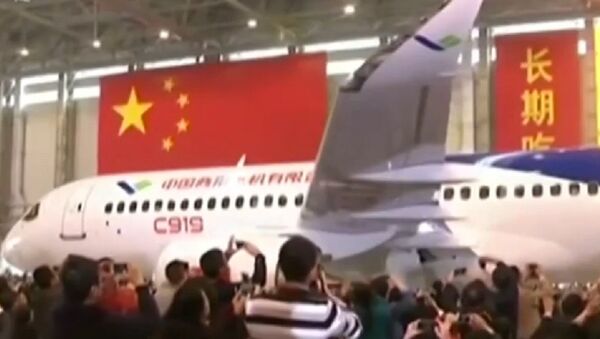The C919 is a twin-engine, narrow-body aircraft seating up to 174 people. It is similar in size to the Airbus 320 and Boeing 737 series of jets.
With a flying range of up to 5,555 kilometers, it is designed to compete with its Airbus and Boeing rivals.
The Commercial Aircraft Corp. of China (COMAC) began work on the twin-engine single-aisle back in 2006, after decades of attempts to create an advanced aerospace sector capable of suppressing the Airbus and Boeing duopoly.
The C919 is conceived as a means to meet the growing demand for air travel in mainland China. The first flight of the C919 was initially planned for 2014 with the first supplies for 2016. But COMAC repeatedly postponed the deadlines due to production problems.
So far, the C919 has received 517 orders, mostly from state-owned Chinese carriers and domestic aircraft leasing companies. The lack of certification from the US Federal Aviation Administration (FAA) is seen as a major deterrent for international sales.
Satisfying the demand in the local market of medium-range aircraft will not be easy for the C919. Airbus and Boeing are not going to voluntarily give up their share in the promising Chinese market.
Boeing, in turn, plans to establish a center in China to supply the Boeing 737 with the final stage of assembly work, including the finishing of the salons and paint job.
In September, during a visit by President Xi Jinping to the US, Boeing signed several agreements with Chinese companies on the delivery of 300 passenger aircraft worth about $38 billion. This became the largest package of contracts that the Chinese signed with the manufacturer of passenger aircraft.



